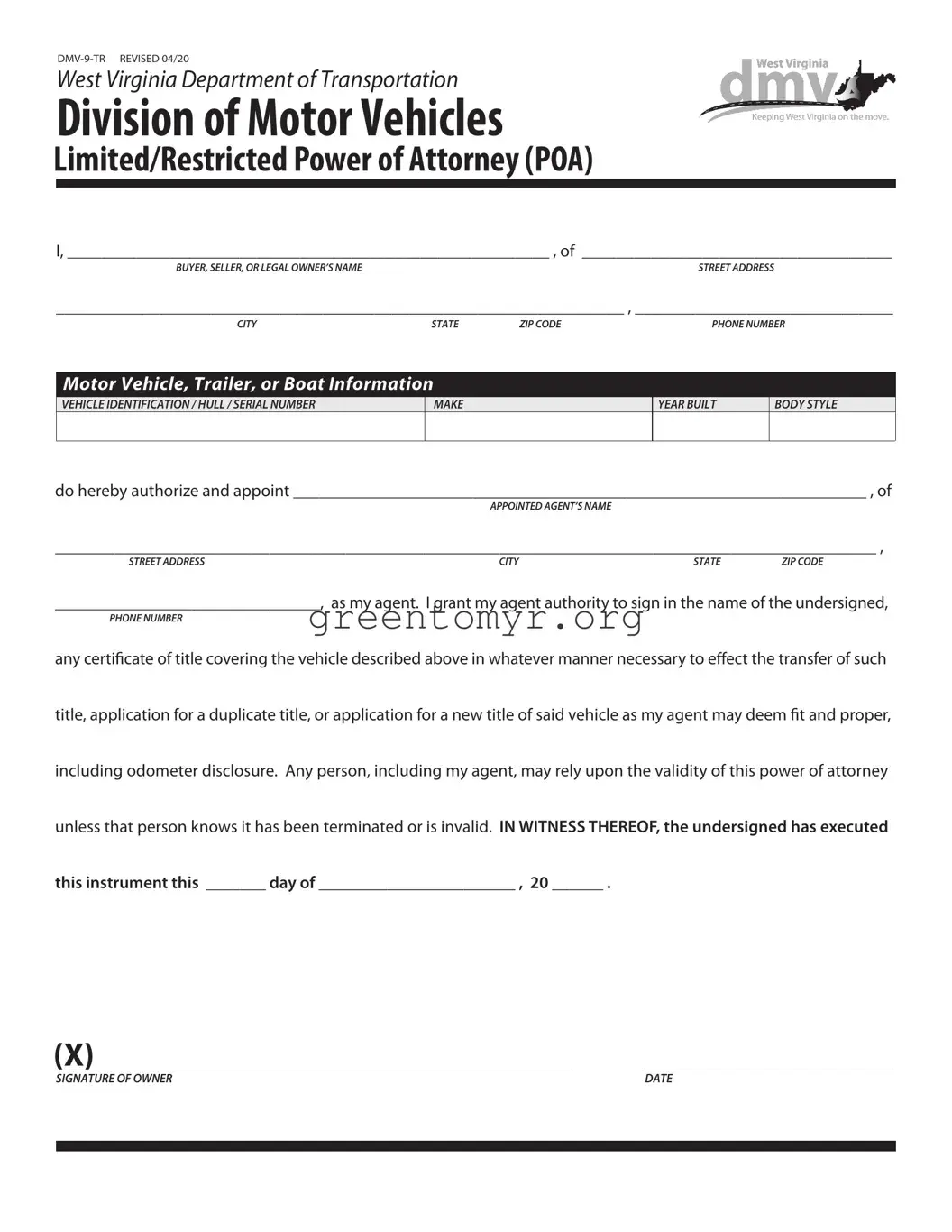DMV-9-TR REVISED 04/20
West Virginia Department of Transportation
Division of Motor Vehicles
Limited/Restricted Power of Attorney (POA)
I, ________________________________________________________ , of ____________________________________
BUYER, SELLER, OR LEGAL OWNER’S NAMESTREET ADDRESS
__________________________________________________________________ , ______________________________
CITYSTATEZIP CODE
Motor Vehicle, Trailer, or Boat Information
VEHICLE IDENTIFICATION / HULL / SERIAL NUMBER |
MAKE |
|
|
do hereby authorize and appoint ___________________________________________________________________ , of
APPOINTED AGENT’S NAME
________________________________________________________________________________________________ ,
STREET ADDRESSCITYSTATEZIP CODE
_______________________________, as my agent. I grant my agent authority to sign in the name of the undersigned,
PHONE NUMBER
any certiÿcate of title covering the vehicle described above in whatever manner necessary to e°ect the transfer of such title, application for a duplicate title, or application for a new title of said vehicle as my agent may deem ÿt and proper, including odometer disclosure. Any person, including my agent, may rely upon the validity of this power of attorney
unless that person knows it has been terminated or is invalid. IN WITNESS THEREOF, the undersigned has executed
this instrument this _______ day of _______________________ , 20 ______ .
(X)

